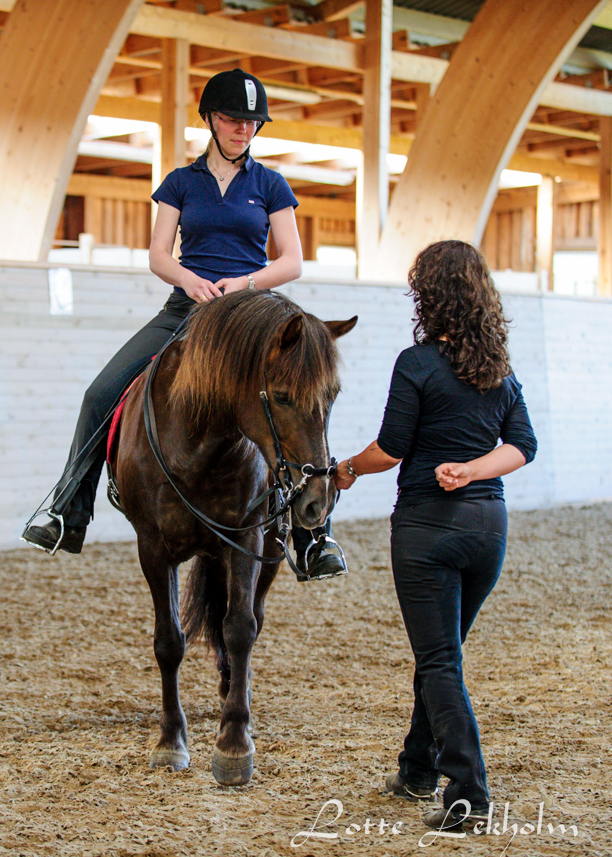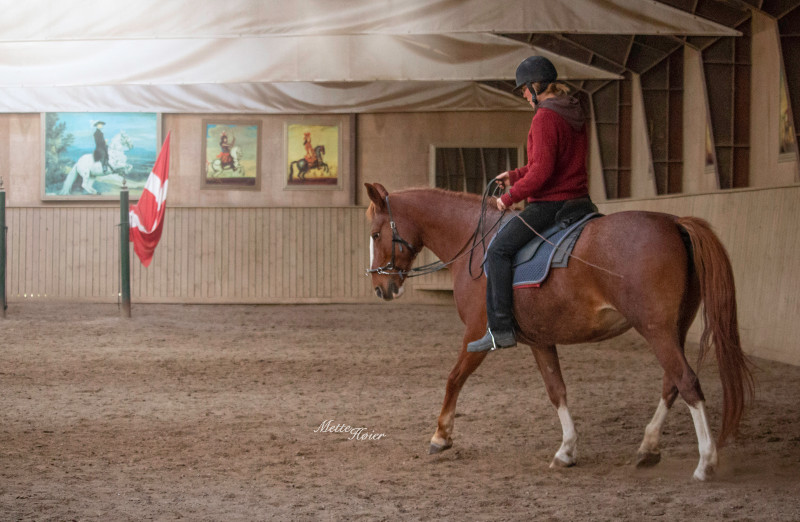How are we supposed to sit on the horse? To the inside, to the outside or equal over the horse? Should it vary when we do different exercises? You sure can get confused, because you can hear about all sorts of different ways of sitting.
When talking about the seat we need to think about what we want to accomplish on the horse back. In Academic Art of Riding we want to educate the spirit, mind and bodies of horse and human. We want the horse to be able to carry itself and us in a good way, that does no damage to either horse or human. But how does a horse carry properly? All four legs must go in one direction, with hind legs stepping in under the seat of the rider and front leg stepping in under the muzzle. As the inside hind leg moves forward the inside hip should come forward and down. The belly then rotates to allow space for the inside hindleg. It is actually not just the belly that rotates, but the whole spine of the horse, from tail to neck. This is called bending and it goes along with stellning. Stellning is the rotation of the skull, where the inside lower jaw is moved in the direction under the wing of the atlas, the first neck vertebrae. However, for this to happen the head must first be searching forward. If the head is held back there is no space to rotate and obtain stellning. Here are some pictures to show when stellning is and is not possible. The bending of the horse can be seen as a rotation of the chest. The inside gets lowered and the outside is raised. The raised outside chest brings along the outside shoulder, that will be lifted and free. The Duke of Newcastle once said the inner leg should appear lower than the outside, and this is because of the rotation of the chest.

Now we know we need chest rotation for a proper bending and stellning. If we allow our inner seat bone and inside leg aids to go downwards when the inside hip is moving forward down, and the outer seat bone and leg aids to go upwards we can maintain the chest rotation and hence bending and stellning. If we press down our outside seat bone we will spoil the chest rotation, the bending and the stellning, and create some hideous curves in the spine. This is unhealthy for the horse and the rider. This gives the answer to how to sit on the horse. We must always sit lower on the inside and higher on the outside seat bone. However, note that there is a difference between lowering your inner seat bone and hanging all of your weight on the inside. You may experience some difficulties lowering the inside seat bone, but then you may try to lift the outside one. Some seat lessons to become aware of your body, pelvis and movements may also be a good suggestion. Good luck!
